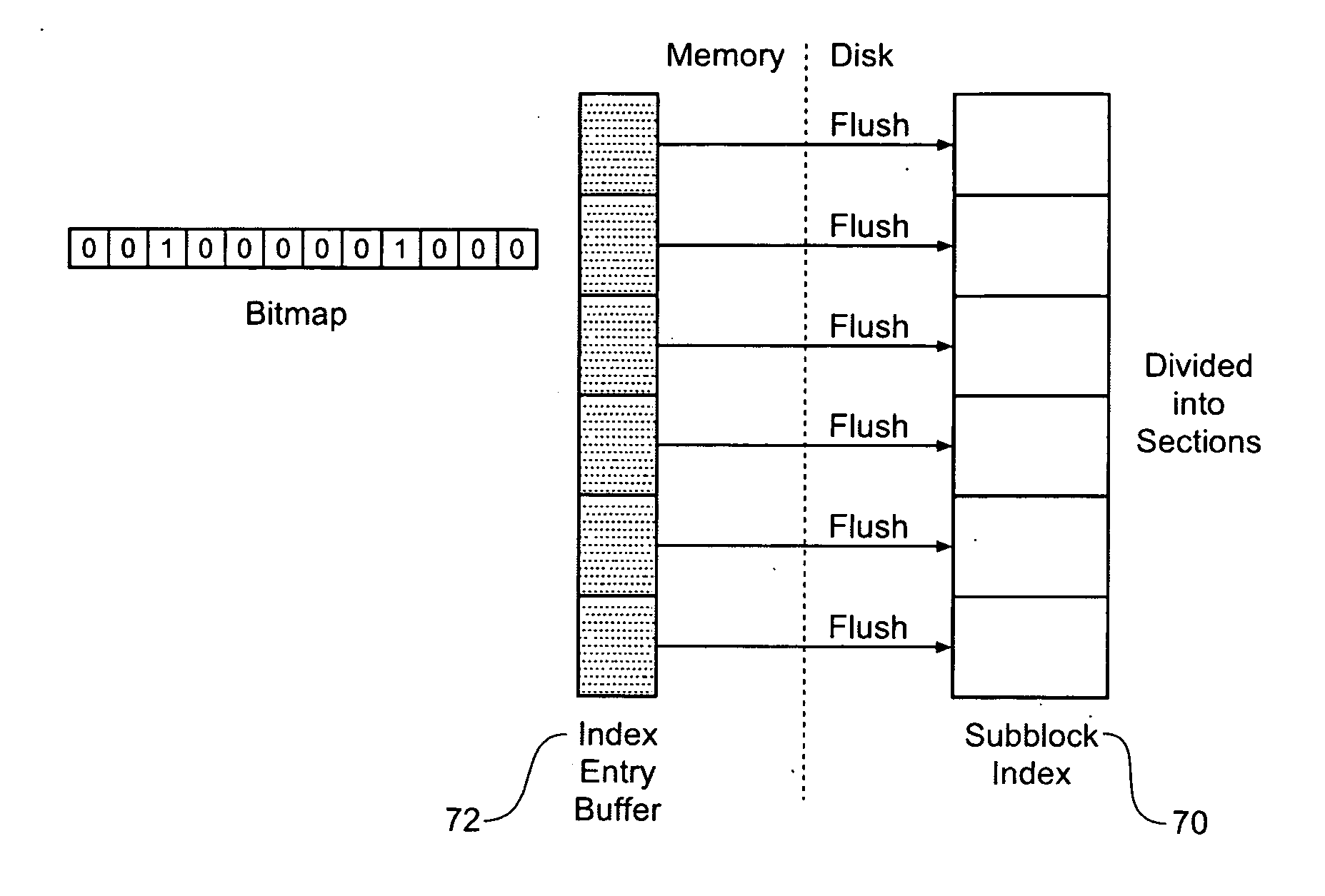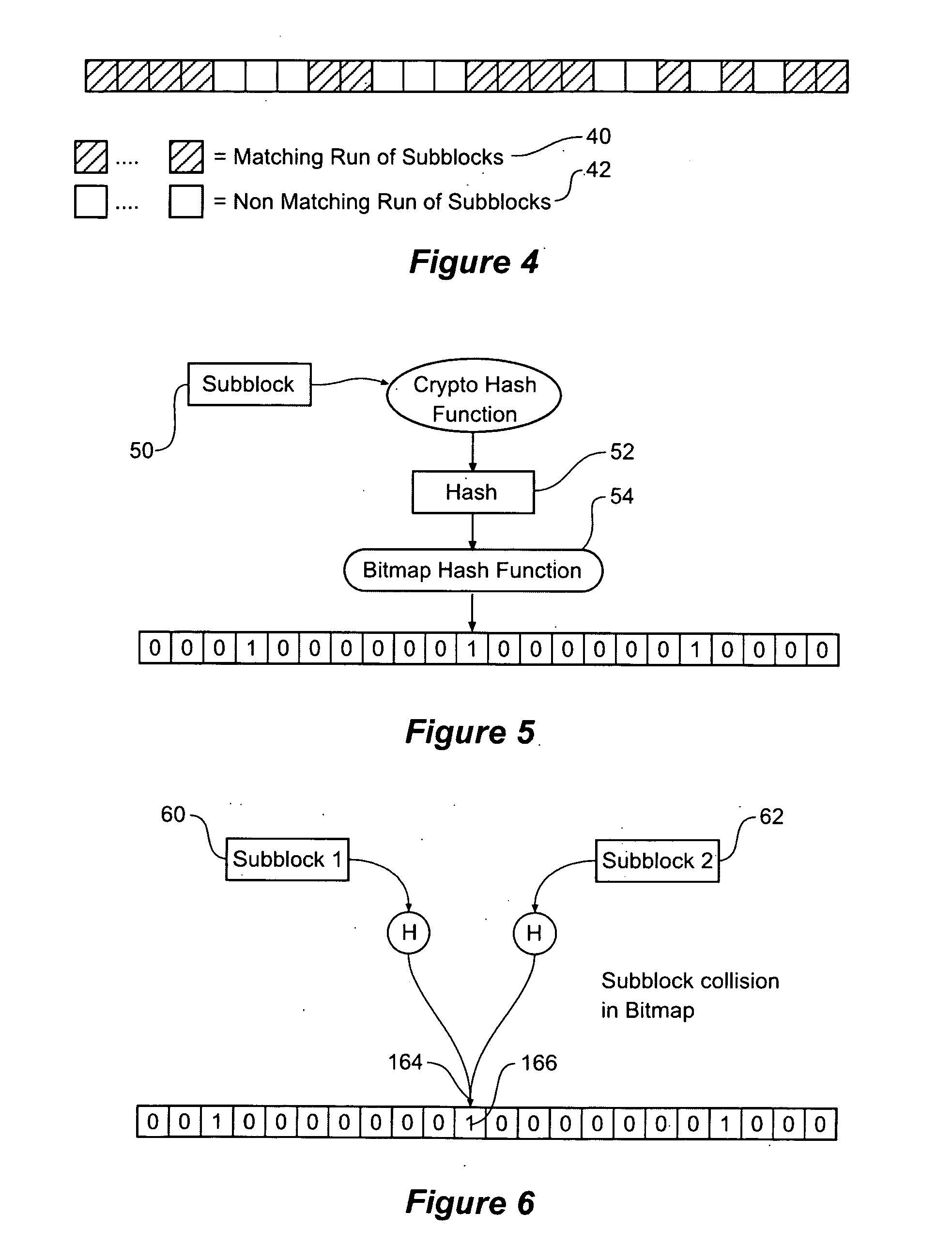Method and apparatus for detecting the presence of subblocks in a reduced-redundancy storage system
- Summary
- Abstract
- Description
- Claims
- Application Information
AI Technical Summary
Benefits of technology
Problems solved by technology
Method used
Image
Examples
Embodiment Construction
[0091] Specific embodiments of the invention will now be described in some further detail with reference to and as illustrated in the accompanying figures. These embodiments are illustrative, and are not meant to be restrictive of the scope of the invention. Suggestions and descriptions of other embodiments may be included within the scope of the invention but they may not be illustrated in the accompanying figures or alternatively features of the invention may be shown in the figures but not described in the specification.
I. Partitioning Methods
[0092] There are a variety of ways in which data can be partitioned into subblocks. These include fixed-length partitioning (in which the data is divided into N-byte subblocks) and variable-length partitioning in which the data is divided into variable-length subblocks at positions where the bytes (or bits) near the position satisfy some predetermined constraint. A detailed discussion of variable-length partitioning methods can be found i...
PUM
 Login to View More
Login to View More Abstract
Description
Claims
Application Information
 Login to View More
Login to View More - R&D
- Intellectual Property
- Life Sciences
- Materials
- Tech Scout
- Unparalleled Data Quality
- Higher Quality Content
- 60% Fewer Hallucinations
Browse by: Latest US Patents, China's latest patents, Technical Efficacy Thesaurus, Application Domain, Technology Topic, Popular Technical Reports.
© 2025 PatSnap. All rights reserved.Legal|Privacy policy|Modern Slavery Act Transparency Statement|Sitemap|About US| Contact US: help@patsnap.com



